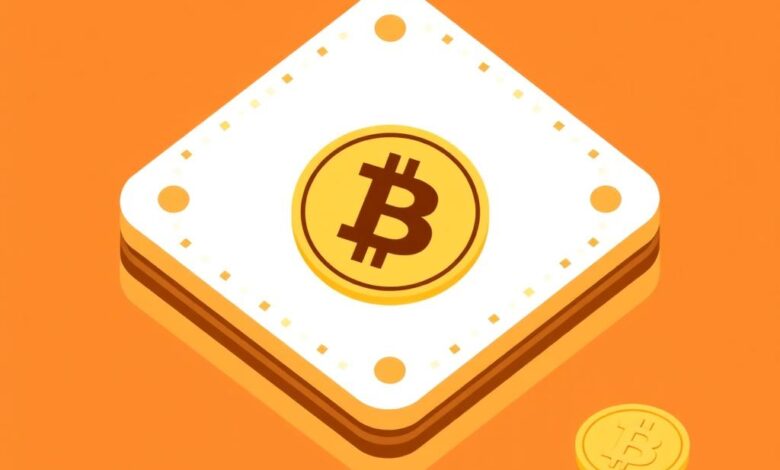What is Lightning Network and why it matters

The integration of a second-layer solution can significantly enhance the usability of bitcoin for microtransactions. This approach enables faster transaction speeds, allowing users to make small payments without incurring high fees. By implementing this technology, businesses can tap into new revenue streams while providing customers with seamless payment experiences.
With growing interest in digital currencies, the ability to process numerous transactions quickly is becoming increasingly vital. Traditional blockchain systems often struggle with scalability issues, leading to delays and increased costs during peak times. A second-layer mechanism addresses these limitations, facilitating instant transactions and making bitcoin a more attractive option for everyday purchases.
As microtransactions gain traction across various sectors, leveraging this innovative solution will be key for businesses looking to stay competitive. Adopting such technology not only enhances customer satisfaction but also opens doors for creative applications in industries ranging from gaming to content monetization.
How the Lightning Protocol Functions
The protocol operates by establishing payment channels between users, allowing transactions to occur off-chain. This method enhances scalability, enabling thousands of transactions per second without congesting the main blockchain.
When a user wants to send funds through this system, they open a channel with another participant. This involves locking a certain amount of cryptocurrency in a multi-signature wallet. Once the channel is active, users can conduct numerous transactions without recording each one on the blockchain.
Settlement occurs only when the channel is closed, at which point the final balance is recorded on the main chain. This process significantly reduces fees and increases speed, making it ideal for microtransactions where traditional methods would be prohibitively expensive.
Routing payments between channels utilizes an innovative algorithm that finds the best path for transactions. If a direct connection doesn’t exist, funds can still be transferred through intermediary nodes, enhancing connectivity within the network.
This structure not only boosts transaction throughput but also provides privacy since individual transactions are not publicly visible until settlement. Consequently, users experience enhanced security while enjoying swift and cost-effective transfers.
Benefits for Bitcoin Transactions
Utilizing the second-layer solution significantly enhances transaction speed. Users experience near-instant confirmations, allowing microtransactions and everyday payments to occur seamlessly.
Scalability is another key advantage. With traditional methods often bottlenecked by network congestion, this approach accommodates a vast number of transactions simultaneously, alleviating pressure on the primary blockchain.
The reduced fees associated with transactions provide cost-effective solutions for users. This makes it feasible to conduct smaller payments without the burden of high costs, promoting broader adoption among various demographics.
Enhanced privacy features offer users greater control over their financial data. Transactions can be conducted without revealing amounts or sender information on the main ledger, ensuring confidentiality.
Increased flexibility in payment channels allows for innovative use cases. Merchants can set up direct payment routes that streamline customer interactions while minimizing settlement times.
This alternative infrastructure not only supports existing operations but also fosters new business models and applications, contributing to Bitcoin’s ongoing evolution within the financial ecosystem.
Challenges and Limitations
To enhance the speed of transactions, it is essential to acknowledge the existing challenges. One significant hurdle is the requirement for liquidity in payment channels. Without adequate funds locked in these channels, users may encounter delays or failed transactions. This limits the scalability of microtransactions, particularly in high-demand periods.
Another concern revolves around the complexity of routing payments. As more participants engage, finding optimal routes can become cumbersome. This can lead to increased fees and slower processing times if not managed effectively.
Security issues also pose a threat. While off-chain transactions offer benefits, they introduce risks such as channel hijacking or payment disputes, necessitating robust mechanisms to mitigate such vulnerabilities.
Additionally, the necessity for users to maintain an online presence complicates access for those with intermittent internet connectivity. The reliance on ongoing network participation may deter broader adoption among casual users.
Finally, regulatory uncertainties could stifle growth. Different jurisdictions are establishing varying frameworks that might impact transaction legality and user privacy, creating a fragmented environment for this technology.
Future Developments Ahead
To enhance the efficiency of microtransactions, focus on the integration of smart contracts within this ecosystem. This will enable automated processes that can facilitate complex agreements without intermediaries.
- Improved Onboarding: Streamlined wallet solutions will simplify user access, promoting wider adoption among non-technical users.
- Cross-chain Compatibility: Future advancements should include interoperability with other cryptocurrencies, broadening use cases and increasing transaction volume.
- Enhanced Privacy Features: Innovations in privacy protocols could attract users concerned about data security while transacting.
- Scalability Solutions: Continuous research into layer-two solutions could further optimize speed and cost-effectiveness for all transactions.
The potential for integration with decentralized finance (DeFi) platforms presents opportunities for users to leverage their bitcoin holdings more effectively. Combining these technologies can lead to innovative financial products tailored to varying market needs.
- Explore partnerships with payment processors to facilitate everyday transactions using bitcoin seamlessly.
- Pursue regulatory clarity to build trust and encourage institutional investment in this evolving infrastructure.
A proactive approach toward community engagement can drive development, ensuring that enhancements align with user requirements while maintaining decentralization principles. Emphasizing user feedback will be key in shaping future iterations of this technology.







